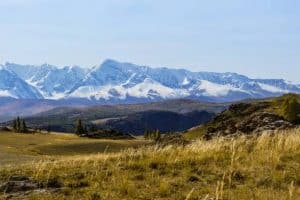
This month we invite you to discover a study entitled "Higher in the mountains: Dynamics of agro-pastoral practices in a low-latitude mountain system (Karkas Mountains, central Iran) during the Mediaeval Warm Period and the Little Ice Age" by Djamali et al, 2025
Little is known about the impact of major climatic changes in the recent past, such as the Medieval Climatic Optimum (950-1250) and the Little Ice Age (1250-1850), on the economy and way of life of mountain populations in South-West Asia. This study carried out in the Karkas mountainsin Iran, shows that these two periods had a profound influence on agricultural and pastoral practices.
During the Medieval Climatic Optimum, milder winters and less frequent summer droughts enabled prosperous cereal farming (particularly wheat) and the creation of permanent villages. With the Little Ice Age, marked by harsher winters and prolonged snow cover, the inhabitants turned to a pastoral lifestyle, with intensive grazing of the mountain steppes.
This research shows that climate had a strong influence on the organisation of medieval societies in Persia and highlights the essential role played by mountain communities in supplying towns. It also highlights the sensitivity of the region's climate to variations in solar activity.
The Mongol invasion of Persia around 1230 marked the end of the agricultural expansion phase, but it probably had little direct impact on these practices.
